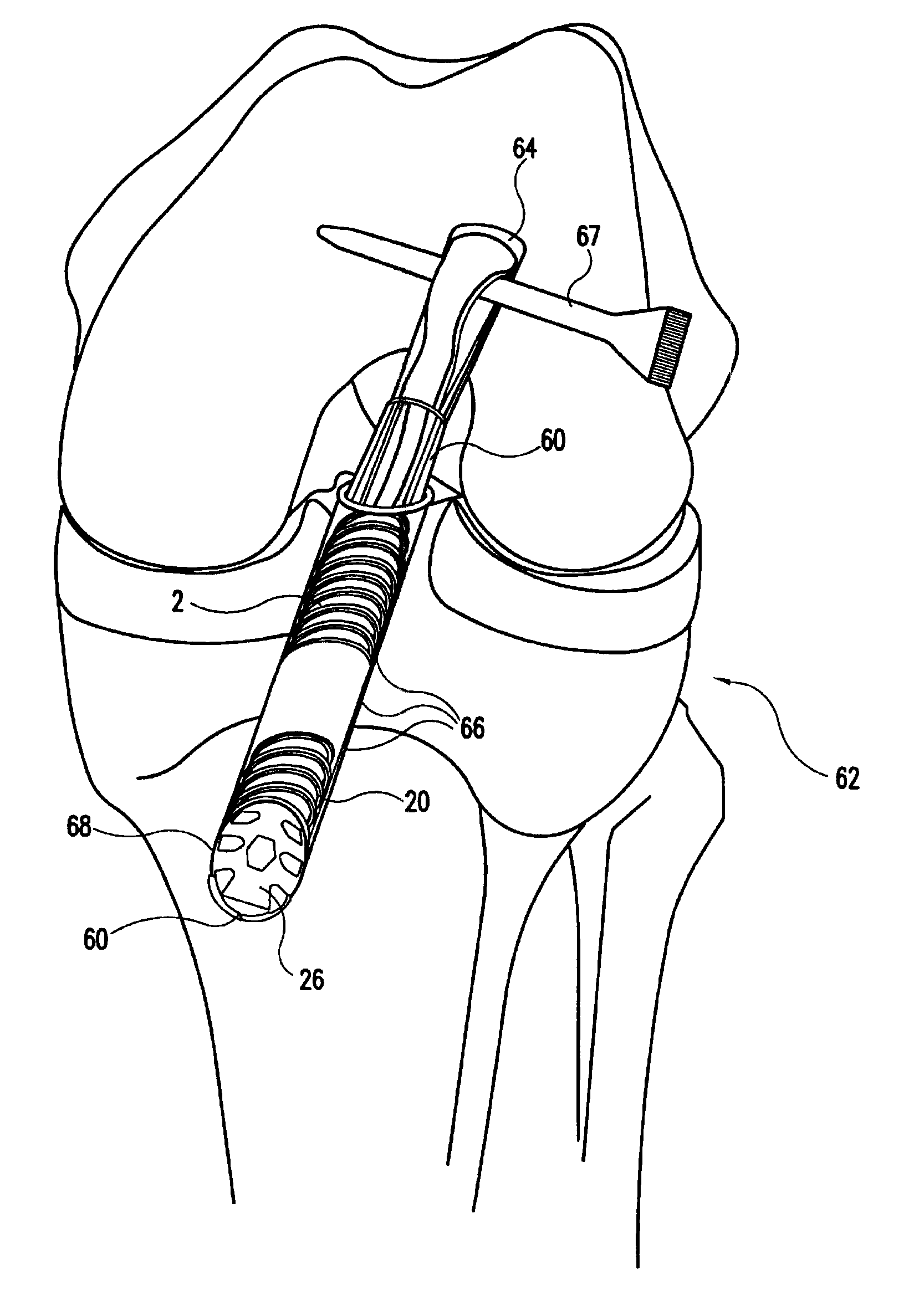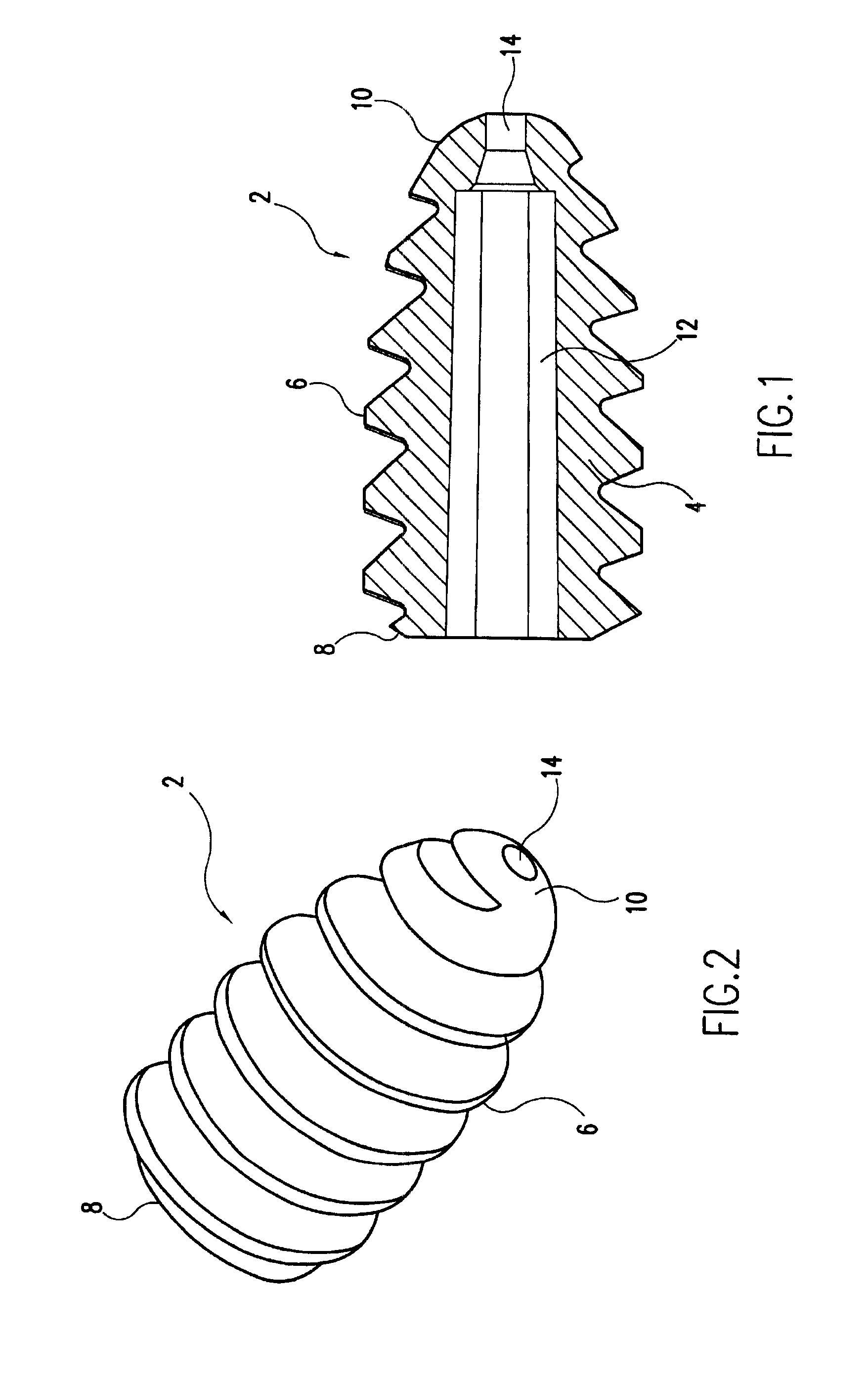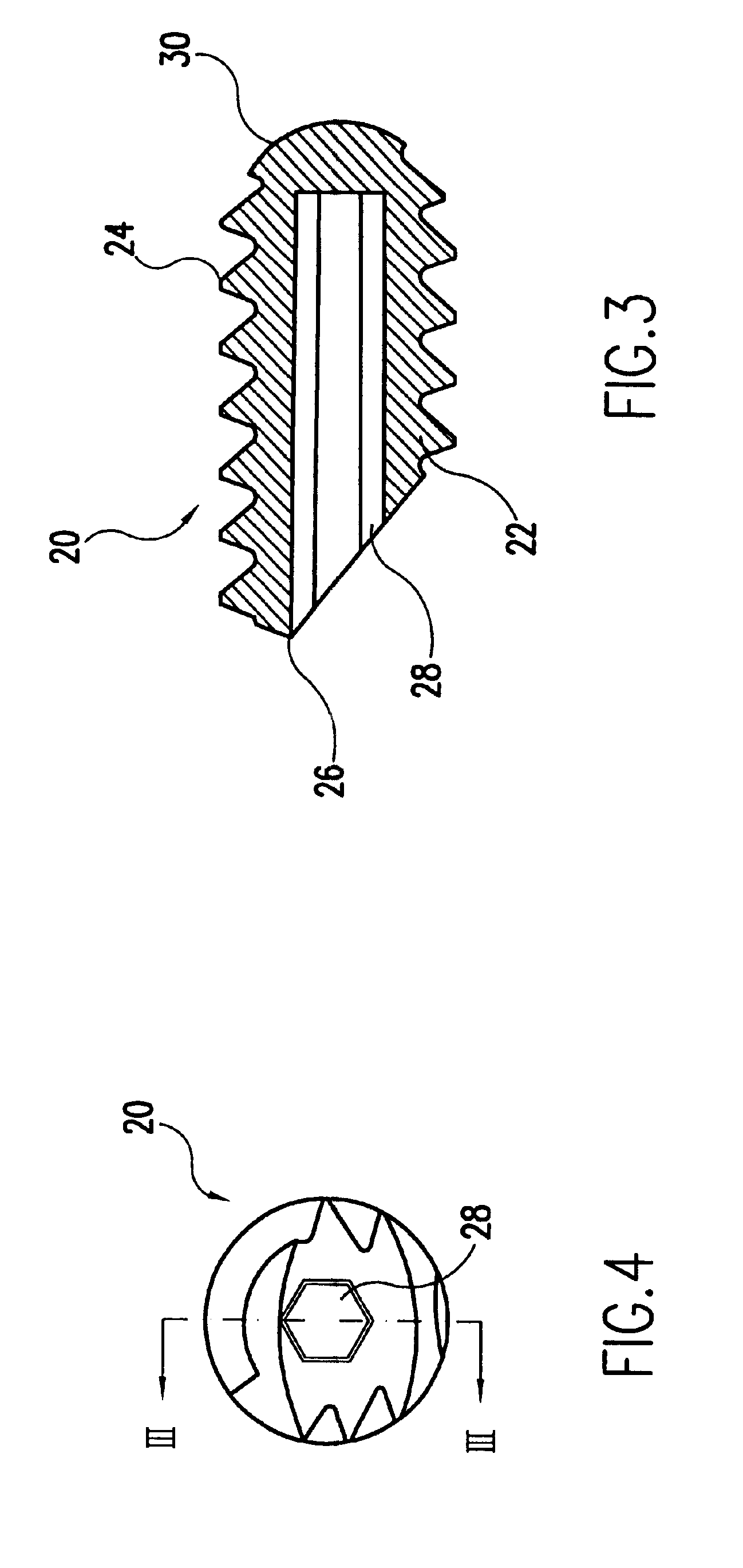Bicortical tibial fixation of ACL grafts
a cruciate ligament and bicortical tibial technology, applied in the field of endosteal fixation of ligaments, can solve the problems of general less secure than internal fixation, and achieve the effects of improving the healing environment of ligament grafts, minimizing the likelihood of damage to the graft and the bone tunnel during the graft healing process, and improving the fixation strength
- Summary
- Abstract
- Description
- Claims
- Application Information
AI Technical Summary
Benefits of technology
Problems solved by technology
Method used
Image
Examples
Embodiment Construction
[0032]Referring to FIGS. 1 and 2, a proximal interference screw 2 for fixation of an ACL graft according to the present invention is shown. The screw fixates the graft in the tibial tunnel, and is installed at the normal ligament anatomical insertion at the tibial plateau according to a preferred method described more fully below. Proximal screw 2 includes a body 4 around which a continuous thread 6 is formed. Thread 6 extends to the back end 8 of the screw 2. The front end 10 of screw 2 has a rounded profile. Thread 6 terminates somewhat away from the front end 10.
[0033]Screw 2 has a hexagonal socket 12 which tapers inwardly and extends from the back end substantially to the front end of the screw. At front end 10, a small, circular cannula 14 is formed for receiving a guide wire or pin. The smaller opening minimizes the amount of synovial fluid which can flow through the screw from the joint space into the interbone space of the tibial tunnel; synovial fluid can retard sharpie fib...
PUM
 Login to View More
Login to View More Abstract
Description
Claims
Application Information
 Login to View More
Login to View More - R&D
- Intellectual Property
- Life Sciences
- Materials
- Tech Scout
- Unparalleled Data Quality
- Higher Quality Content
- 60% Fewer Hallucinations
Browse by: Latest US Patents, China's latest patents, Technical Efficacy Thesaurus, Application Domain, Technology Topic, Popular Technical Reports.
© 2025 PatSnap. All rights reserved.Legal|Privacy policy|Modern Slavery Act Transparency Statement|Sitemap|About US| Contact US: help@patsnap.com



